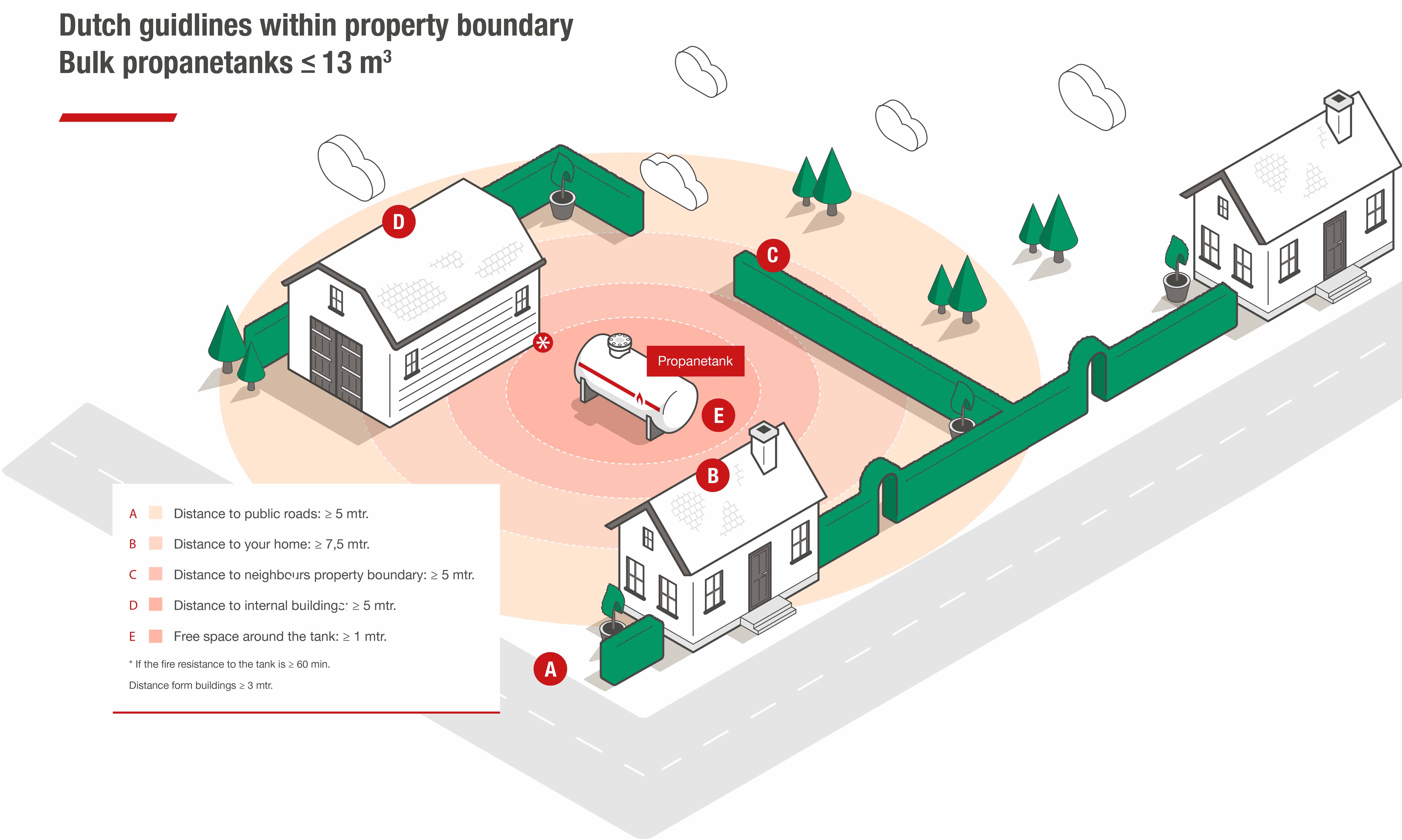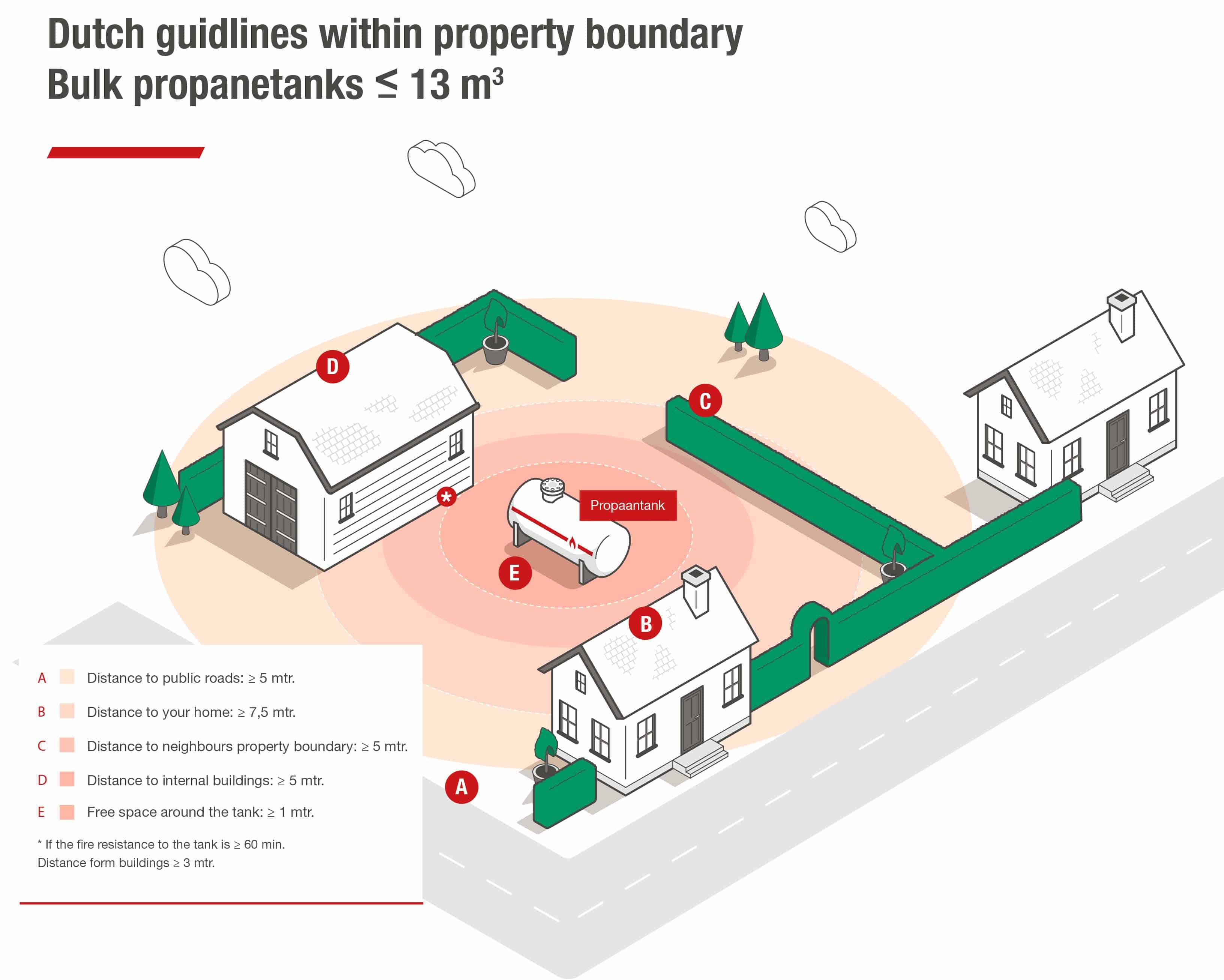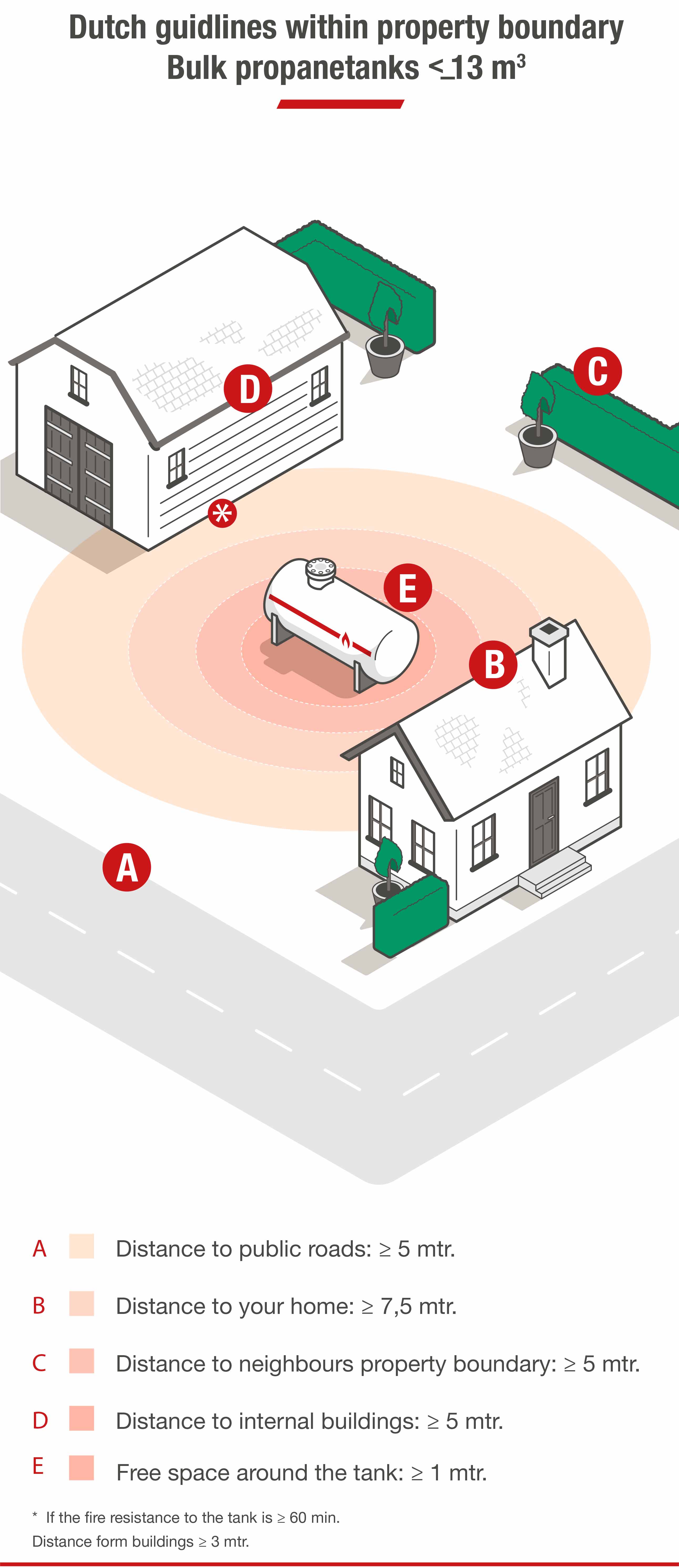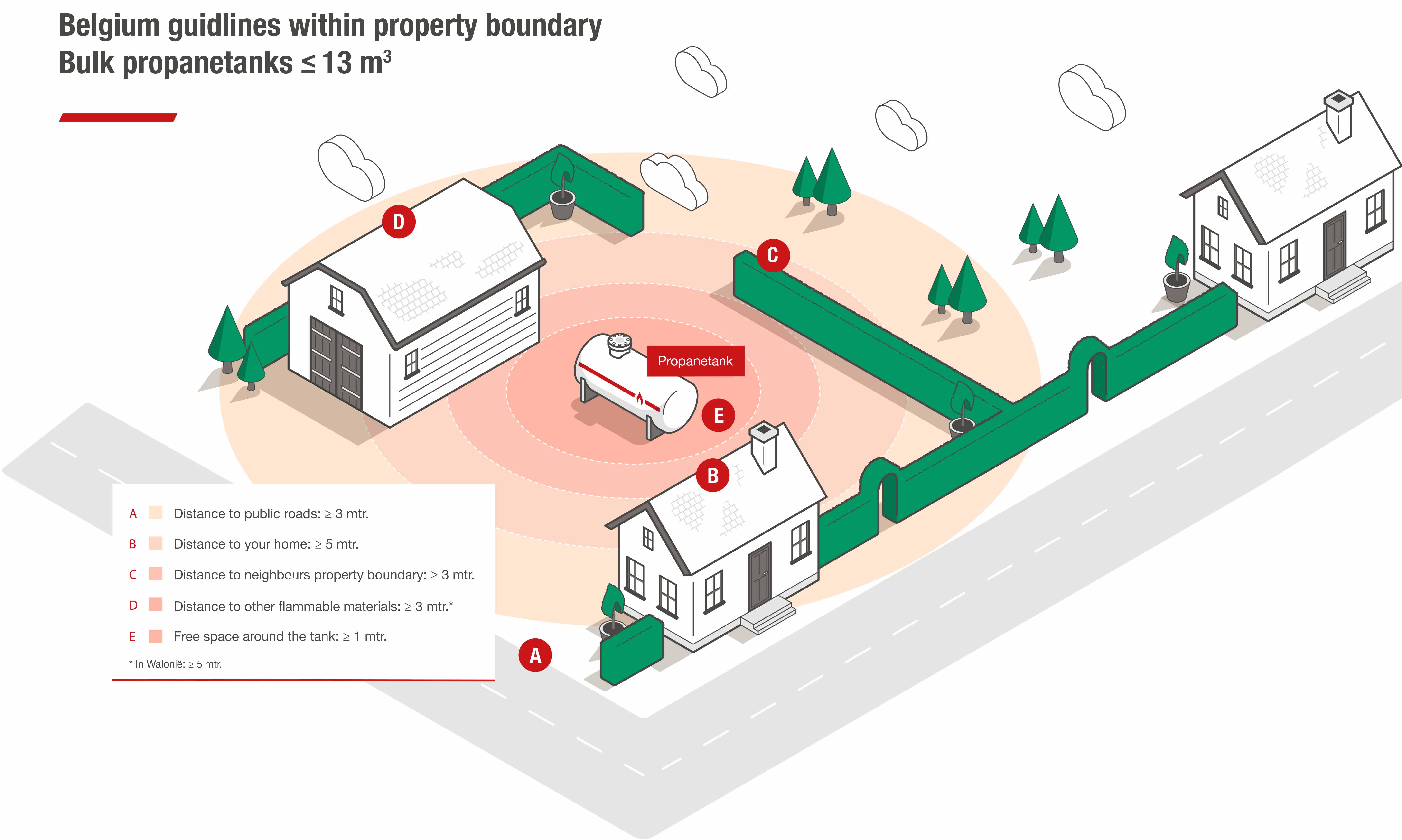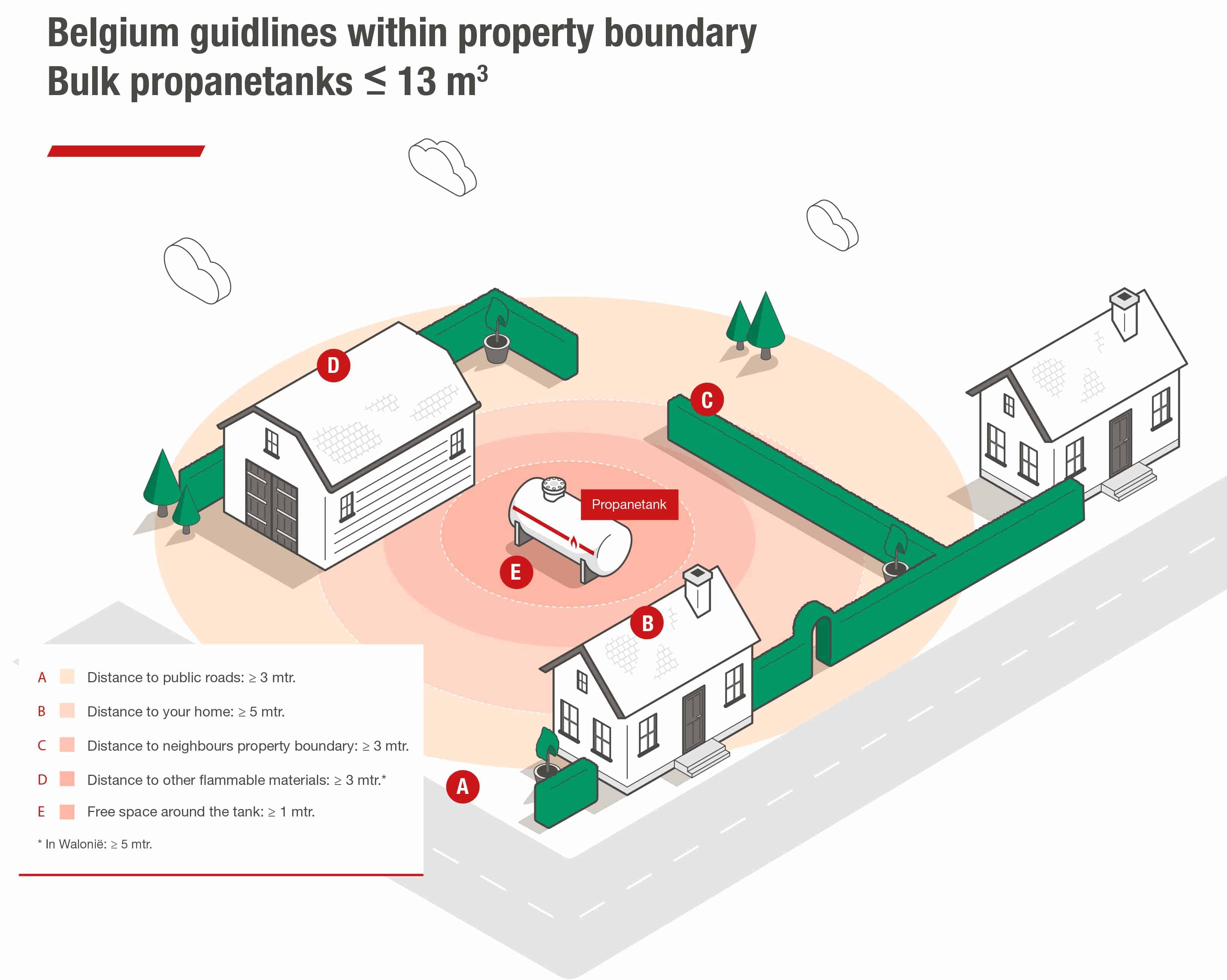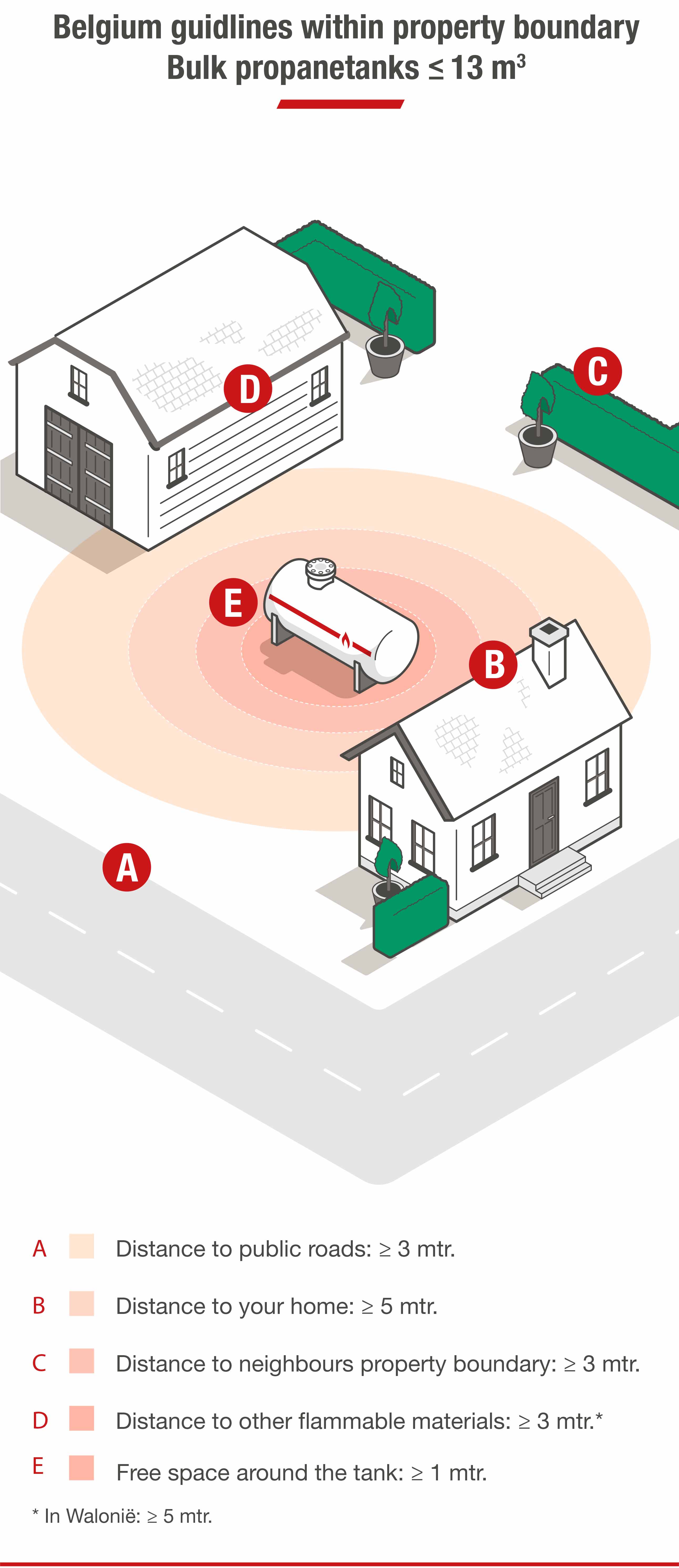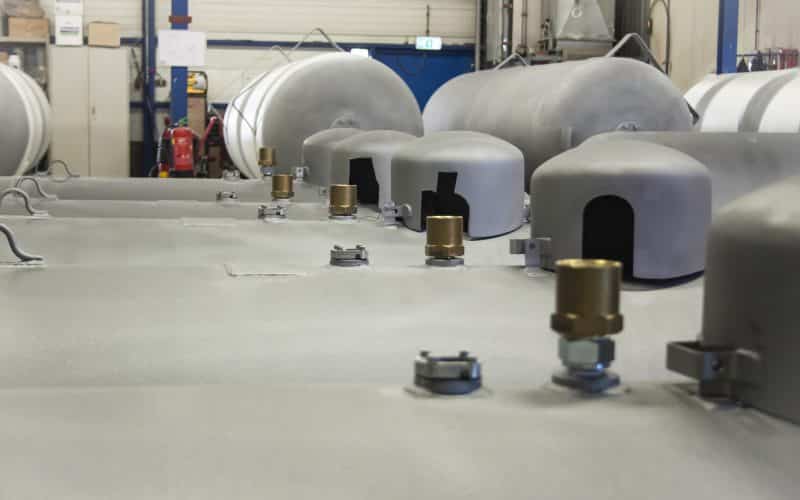
Tank inspection and maintenance
Due to the pressure in a propane tank, it is subject to strict safety requirements. A tank has to be inspected regularly to make sure it continues to meet these requirements. A propane tank is inspected every year to check for leaks, damage or corrosion. Tanks with a volume smaller than 13 m³ have a different inspection frequency: once every 2 years.
A well-maintained tank is always free of plants, obstacles and excessive vegetation. This prevents damage to the paint on the tank and keeps your tank looking good. At the end of the inspection period, the engineer will come to replace the pressure relief valve and will inspect the tank immediately afterwards. The tank must be empty in order to replace this valve.
